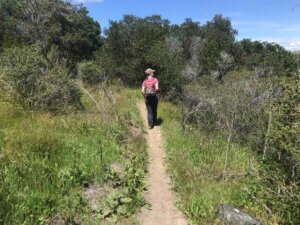Visitor Use Management: More than Reservations for the Great Outdoors
According to a study published in 2022 in Scientific Reports, visitor use at publicly protected areas such as national parks has exploded since pandemic restrictions were removed, creating crowding issues. From a visitor’s perspective, crowding in these areas becomes problematic when it interferes with finding a place to park or finding a place to camp. From a park manager’s perspective, crowding can create visitor dissatisfaction which can lead to negative publicity; hazardous conditions and public safety issues (think Half Dome on a busy day); and/or unwanted impacts to sensitive or protected natural and cultural resources. Growing demand for access to public space underscores the need for a means to better manage visitors, both from the park and land management perspective and for the user experience. WRA’s public access team is poised to address this growing demand via expertise with visitor use management.
What is VUM?
Visitor Use Management (VUM) is an adaptive process that generally involves identifying a problem, implementing actions to address the problem, and then monitoring the problem over time to adjust the type of action required. To provide resources for managers who want to implement this process, a group of Federal agency scientists developed the VUM Framework. Problem identification is a complex process that covers steps 1 and 2 in the VUM Framework. In step 3, managers may develop a range of management actions and step 4 covers implementing actions, monitoring the problem, and adjusting as needed. Additional resources from the Interagency Visitor Use Management Council can be found here.
What is the need for VUM?
Park managers often see the utility of VUM as a method to facilitate a solution to visitor crowding and sometimes associate VUM with limiting visitation through a reservation system. However, visitor capacities and reservations are just some of the tools in the VUM toolbox. Applying the full VUM process is critical for effective solutions. Problems may be addressed using a range of tools or actions. In some cases, crowding may be a symptom of a different problem which a reservation may not fix.
VUM is also useful for protecting natural and cultural resources. Though some Resource Management Plans (which are more broadly applied than a VUM Plan) may attempt to address problems, without the VUM process and monitoring, the actions may be ineffective and place undue burden on managers or visitors. For example, a wet meadow that is popular for observing wildflowers may be experiencing vegetation loss due to extensive and widespread visitor use. Instead of closing the meadow to visitor use, the optimal VUM solution might be to construct a boardwalk into the meadow that allows for limited visitor use and avoids trampling of vegetation.
How are managers incorporating VUM?
Some park managers utilize VUM by developing a specialized plan, such as at Zion National Park, or special section of a broader plan, as done at Golden Gate National Recreation Area. These plans work through each step of the process and hold park managers accountable for implementation. A VUM Plan can take years to develop and implement and may not come with any dedicated staff or funding, which could leave some issues festering. Contrastingly, VUM efforts may be developed on a problem-by-problem basis and the process steps incorporated into existing programs and staffing structures. Visitation increases and vegetation trampling during desert wildflower “super blooms” like those seen at Anza-Borrego Desert State Park would be a good candidate for a smaller scale, focused VUM approach.

Conclusion
VUM is becoming increasingly important to park and other public access managers as climate change and increasing park visitation threatens sensitive resources and the quality of visitors’ park experiences. WRA’s experts foresee use of VUM best management practices expanding to local, regional, and state park systems. For example, WRA is evaluating VUM strategies for an Open Space Management Plan for the city of Belmont in the San Francisco Bay area. WRA’s public access team can help plan, design, and implement your VUM program, and scale it to local, regional, state or national parks. WRA can collect data to determine if a VUM program is needed, can evaluate which VUM program is most appropriate, and can monitor such programs to verify that they are working as intended.
For more information please contact WRA’s public access experts or reach out on our contact us page!
John Baas
baas@wra-ca.com
Robin Graham
Robin.graham@wra-ca.com




